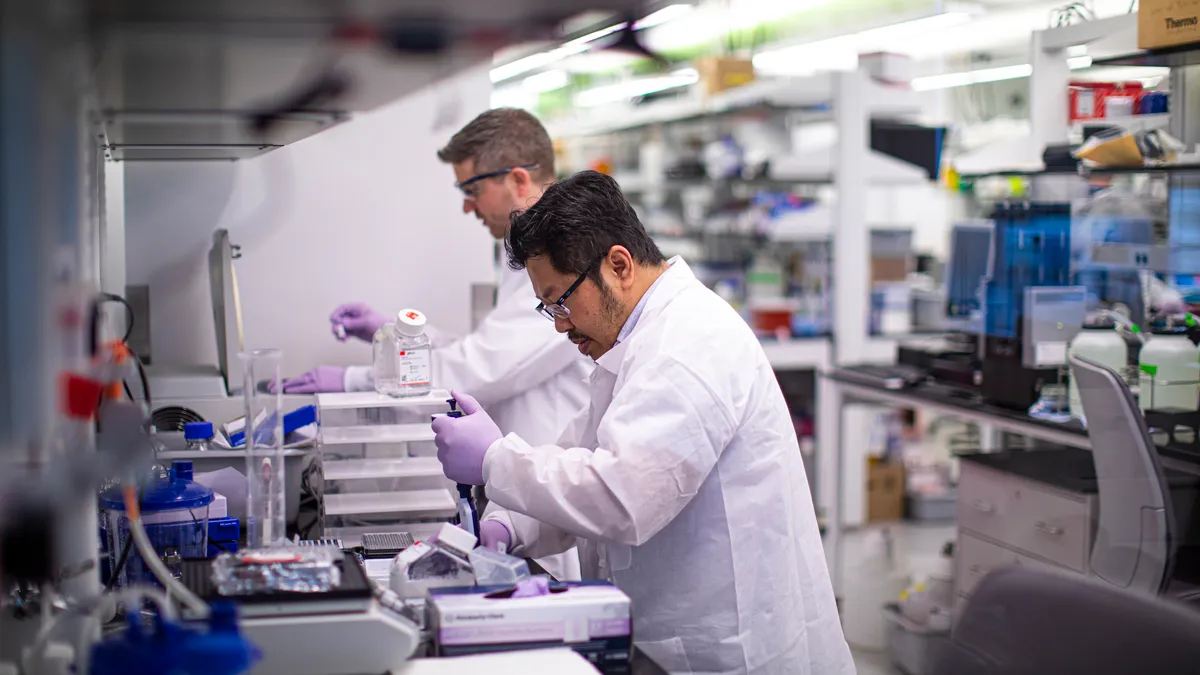Demand continues to exceed supply as more players express interest in the life sciences sector, according to industry analysts.
"As we look forward, there's nothing in our data that shows any change in the positive momentum that we're seeing," said Ian Anderson, senior director of research at CBRE, during a recent online forum focused on life sciences real estate strategies. "This is like the boom in warehouses, e-commerce and data centers."
The life science sector consists of the fields of pharmaceuticals, biotechnology, biomedical technologies, nutraceuticals, cosmeceuticals and others. The recent boom in interest has been driven in part by the COVID-19 pandemic, as the sector exponentially grew due to activity around vaccine development.
Some of the larger trends in the real estate industry have also been pushing players who haven't traditionally been in the life sciences sector into it, as multifamily and office investments have become more difficult to execute, said Nick Iselin, general manager of Boston development at Lendlease, during the forum, which was sponsored by the Commercial Observer.
Since investors view multifamily as a safe-haven investment class, that has caused increased competition for deals among the space, leaving miniscule returns on the table, Iselin said. Offices in high-density cities have struggled with vacancy rates due to the pandemic and remote working.
Although vacancy rates have been rising in major office markets the past 18 months, the opposite holds true in the life science sector. There is virtually no vacancy, especially in major life science hubs like Boston and San Diego, said Cerise Marcela, senior vice president at CBRE, a presenter at the webinar. She adds there is increasing activity on the investor side, both by more established life science landlords and also new investors dipping their toes into the space. In other words, investors remain bullish in trading lab spaces on a speculative basis at the moment across the board, she said.
Challenges ahead
Although demand is heating up in the life sciences industry, there are still challenges for developers and contractors entering the sector.
Lab science buildings differ from typical office construction, as they have "very specialized infrastructure in them," said Adam Sichol, CEO of Boston-based Longfellow Real Estate Partners, during the webinar. This includes the need to have space for chemicals and chemical storage, clean room spaces, special ventilation and fireproofing systems, extra power and emergency generators, among other requirements.
"I know there is a lot of excitement around life sciences and we certainly continue to believe in the space and we think it is going to continue to grow. But it's not like all office buildings are suddenly going to become lab buildings overnight," said Sichol.
He noted that even in cities with a glut of office space, such as New York City, developers won't necessarily be able to convert them to science-related facilities.
"Not every building is a conversion opportunity. Even one that you might think could be a conversion opportunity, there could be some issues around loading, or there could be some issues around the core, or location, or the neighborhood," he said. "There's a million different things that could impact it."
Regional hot spots
There's been overwhelming demand in all markets, and markets predicted to take longer to fill are ahead of schedule, said Adam Milne, chief operating officer at BioLabs, a membership-based network of shared lab and office facilities. For example, New York City is growing into one of the premier life science hubs in the U.S., and can be as competitive as Cambridge, Massachusetts, or San Diego, said panelists.
The presenters agreed that New York has all the things it needs to take off as a life science cluster, such as academic institutions, medical centers and access to venture dollars. Any new life science buildings in the city could also tap into the area's diverse range of restaurants, fitness and overall culture the city provides.
In contrast, because the life science sector in Alexandria, Virginia, is an isolated site, away from an urban setting like New York City, many of the amenities had to be brought to the project in the initial stages, said Peter Schubert, design partner at Ennead Architects.
"We've seen a flood of interest in what we've done. There’s been a push and a renewed willingness to take risks in life sciences in a way that people have sort of fallen away from in years past," said Milne. "Everyone is willing to take those bets."






















